Tim Wagner, Assistant Film Archivist at Indiana University Libraries Moving Image Archive (IULMIA)
“All the world’s a stage, and all the men and women merely players:
They have their exits and their entrances;
And one man in his time plays many parts”
As You Like It. Act 2, Scene 7
…and sometimes, the entrances are quite the surprise. As a film archivist at Indiana University Libraries Moving Image Archive (IULMIA), my recent encounter with William Shakespeare and his Globe Theatre was just that, a surprise!
Working on Indiana University’s Media Digitization & Preservation Initiative (MDPI) phase 2, film digitization, I’m currently evaluating motion picture film prints and pre-print film elements of Teaching Film Custodians films for possible digitization. Teaching Film Custodians (TFC) became a membership corporation of the State University of New York in 1938. According to its original by-laws, the purpose of the company was to “advance and promote the scientific use of motion picture films for educational purposes…by cooperating with producers of motion pictures to further the educational value of motion picture films.” The corporation provided abridged classroom versions of hundreds of feature films and television programs, and short educational films, for use within schools and universities; mostly adaptations of novels and historical features. In the 1960’s TFC added resources for foreign language education. TFC merged with Indiana University in 1973. Today, several of the TFC films can be found in Indiana University Libraries Moving Image Archive.
Many of the TFC films I’m inspecting these days are abridged classroom versions of a 1950’s television series, Cavalcade of America, re-named Du Pont Cavalcade Theater in later seasons. Sponsored by the DuPont Company, “Maker of better things for better living, through chemistry”, this 30-minute anthology drama television series documented historical events using stories of individual courage, initiative and achievement, emphasizing humanitarian progress, particularly improvements in the lives of women, often through technological innovation. Airing on network television for five seasons (1952 – 1957), this series originated as a radio broadcast in 1935, intended to improve DuPont’s public image after World War I. A post-war investigation concluded that DuPont had made a fortune profiteering in the war.
While inspecting 17 reels of 16mm projection prints and 16mm & 35mm pre-print film elements for “Decision for Justice: John Marshall and the Supreme Court”, a TFC abridged classroom version of the Cavalcade of America television series episode, “Decision for Justice”, I encountered several reels of 35mm negative picture and sound elements for the television series episode itself.
While most every reel of film which I inspected matched the information written on the film can, I did have one surprise in store for me. Within the film can labelled “Decision for Justice – Mixed Master”, I was expecting to encounter yet another black and white negative or interpositive film. As I unspooled the end of the 35mm film reel on my inspection bench, a color composite (sound and image) positive film revealed itself. Surprise!
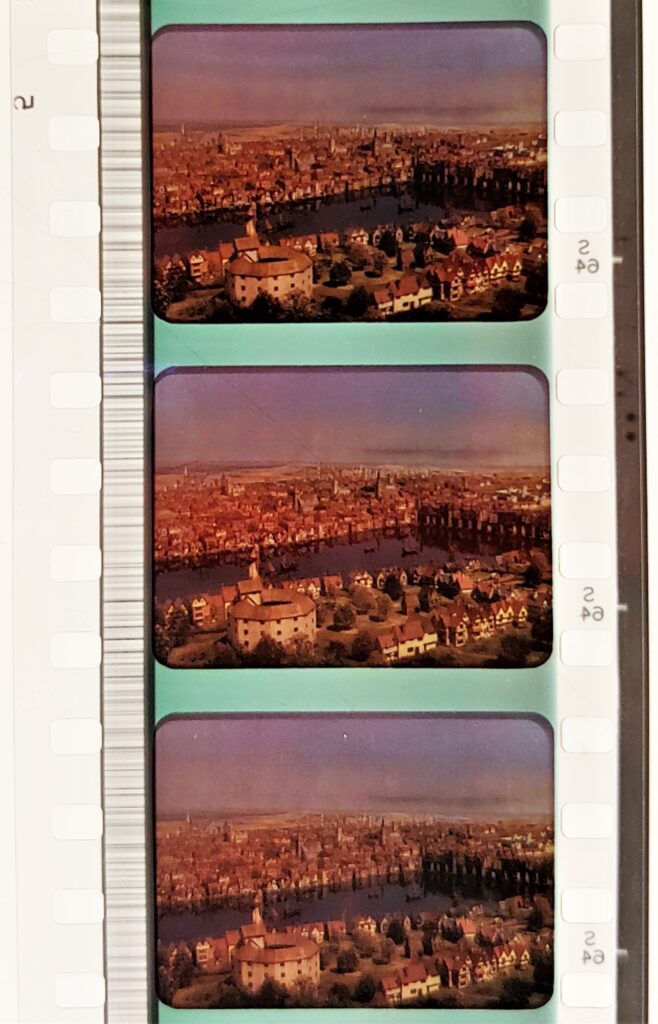
I soon realized too, that this was no ordinary (chromogenic) color film print, but a Technicolor dye transfer print. Cool! What makes Technicolor film prints different than standard motion picture color film, is that the color is not embedded within the film emulsion via dye couplers, which fade over time, but rather, a series of permanent color dyes which are “stamped” directly onto each film print through the imbibition process, using individual matrices for each color (cyan, magenta, and yellow). The result is a color film print which doesn’t fade. After documenting the physical attributes of this misidentified film, I had to figure out what it was, since there were no titles at the head. Sandwiched between an aerial view of centuries-old London (image above), and scenes of people in centuries-old clothing styles milling about the innards of a theater, a vital clue appeared; a banner hoisted above the rooftop, sporting the phrase, “The Globe Playhouse”. Aha!
Turning to that ever-resourceful internet search, a combination of “The Globe Playhouse” + Technicolor film yielded the answer: the 1944 British Technicolor feature film “Henry V”. A plot description in the Wikipedia entry confirmed the images present at the beginning of the reel, which proved to be the prologue of the film. Marking the directorial debut of Sir Laurence Olivier, who also co-produced and starred in the film, “Henry V” was the first Technicolor film adaptation ever made of a Shakespearean play, shot with the only 3-strip Technicolor camera in the UK at the time. Made near the end of World War II, and intended as a morale booster for Britain, the film was partly funded by the British government. Widely considered among the best film adaptations of Shakespeare’s work, “Henry V” earned Olivier an honorary Academy Award for “outstanding achievement as actor, producer, and director.”
A Title Search within our custom film database, filmdb, revealed 16 reels of 16mm film of “Henry V” within our holdings; likely all projection prints. Were this but the end of the story…
As I continued inspecting the reel, another surprise awaited me; a metal clip designed to fasten two pieces of 35mm film together. Very interesting. I had not encountered such a device before. Stamped into the surface of the clip was the following information, “R.C. MERCER FILM PATCH”, with a third line of text partially cut off, “LOS ANGELES”.

Another internet search led to the June 1, 1920 patent application for the Film Patch by Raymond C. Mercer of Los Angeles, CA. The illustrations on the patent application, which was approved on August 30th, 1921, clearly show a clip designed to engage four perforations of the film. The clip I had encountered was obviously cut in half, engaging only two of the perforations, and thereby cutting off part of the “LOS ANGELES” text. Fortunately for me, I was encountering the top half of the clip, carrying the text information which allowed me to identify it. Another mystery solved.
But wait, there’s more!
Further inspection of the 35mm Technicolor composite footage revealed a mid-reel segment of silent, color-faded film featuring graphics of William Shakespeare, a circa 1600 map of London, and line drawings of the Globe Theater. What is this doing here? Following this segment, the film appeared to repeat some of the footage from the head of the reel, along with some additional footage. The film ended with another segment of silent, color-faded film featuring graphics, and an end title, “Additional commentary by the Committee of the National Council of Teachers of English to cooperate with Teaching Film Custodians. Narrator, Rod Colbin.” Hmmm. The plot thickens.
A search within the Teaching Film Custodians’ February, 1954 “Films For Classroom Use” catalog did reveal a TFC release of a Shakespeare film adaptation, but that was “Romeo and Juliet”. Dead end (as it were). Fortunately, I did spy one further clue in the film print, which was key to identifying this film. The black lab leader at the tail of the reel had the words, “Shakespeare’s Theater” etched into it. Time for another trusty internet search. Searching on “Shakespeare’s Theater” revealed countless entries regarding the Globe Theater in London. Adding “Teaching Film Custodians” to the search yielded one profitable result: a page on the Internet Archive for the Teaching Film Custodians’ 1960 production of “Shakespeare’s Theater”. Hurrah! This web source, which also includes a viewable file of a heavily scratched print of the film, allowed me to positively identify the 35mm element I was inspecting and see the titles which are missing. Score!
A Title Search on “Shakespeare’s Theater” in filmdb revealed seven Title Records, encompassing 25 reels of film. Consisting primarily of 16mm material, these reels have now been requested and added to my work que, proving that I don’t have to go looking for trouble, it finds me! The revelation of seven Title Records for the same film provided the opportunity to merge them, thereby cleaning up our database a tad more; one of the many benefits of the MDPI phase 2 project work.
Based on the information I gathered about this film, the Summary in our filmdb Title Record now reads, “A Teaching Film Custodians film about the presentation and conventions of live theatre at Shakespeare’s Globe Theater, circa 1600. Incorporating footage from the prologue of the 1944 British Technicolor feature film, “Henry V”, directed by and starring Sir Laurence Olivier, and graphics, this film illustrates the location and appearance of the Globe and Rose theaters, the activity before a typical presentation, where the audience was seated, and the manner in which the Globe Theater was used. We see the audience entering the theater, gallants taking their places on stage, the orange girl and cider man hawking their wares, and the actors preparing for their entrance. Concludes with the curtain parting and the chorus reciting the prologue.”
This adventure represents one of the many discoveries encountered while working on the MDPI phase 2 project. One more puzzle pieced together, a very satisfying aspect of my work on Indiana University’s Media Digitization & Preservation Initiative.
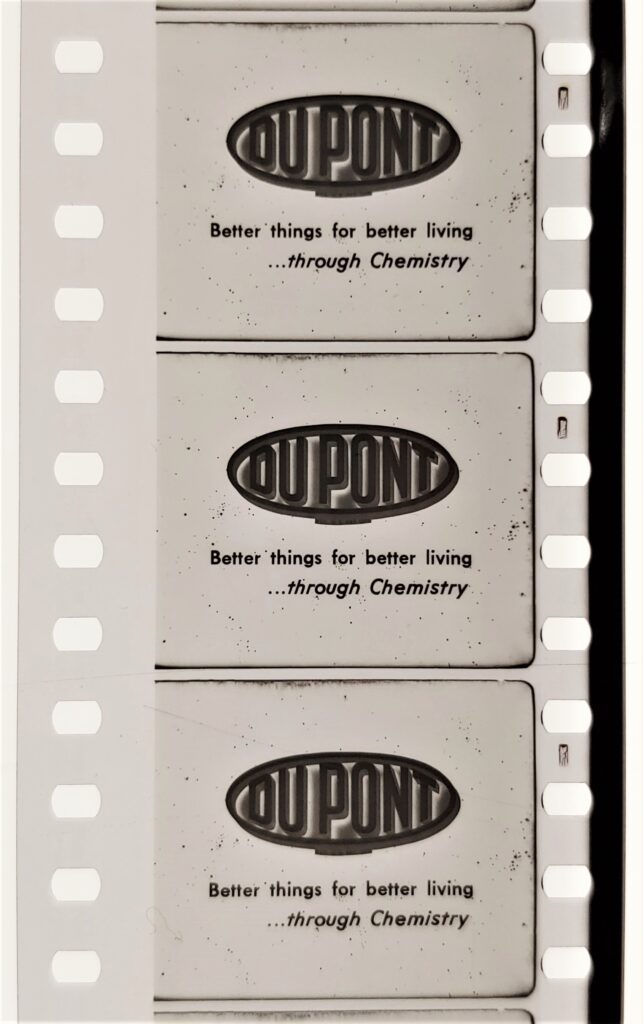
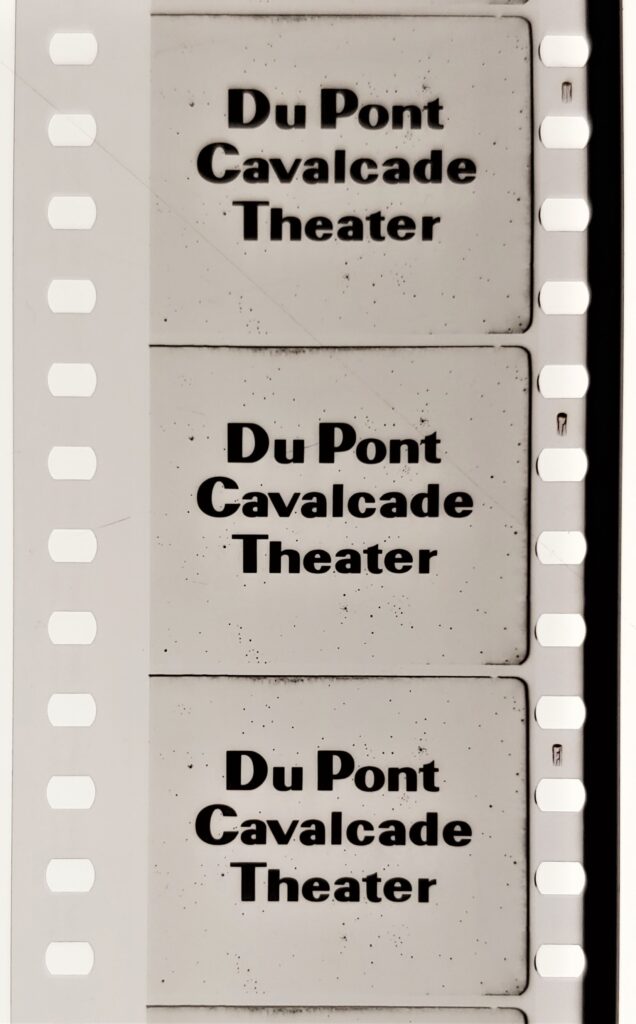
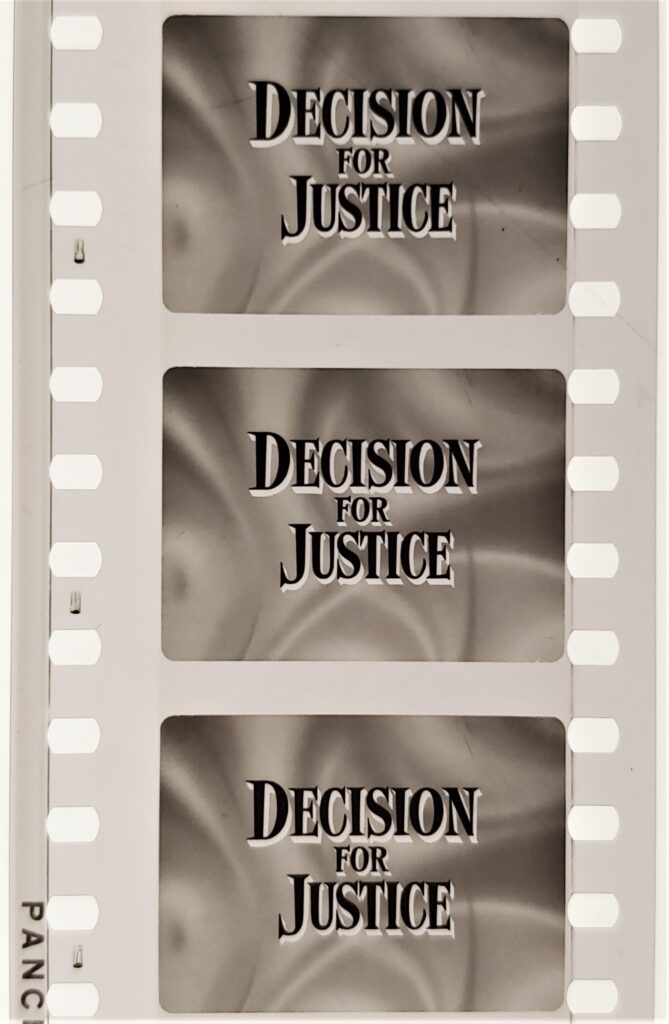

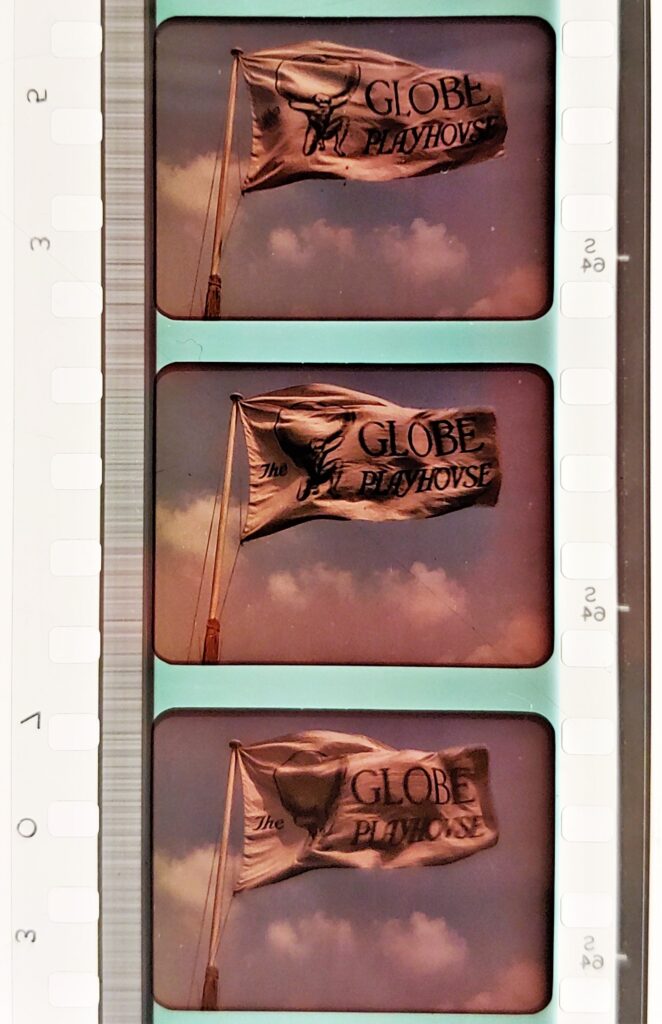
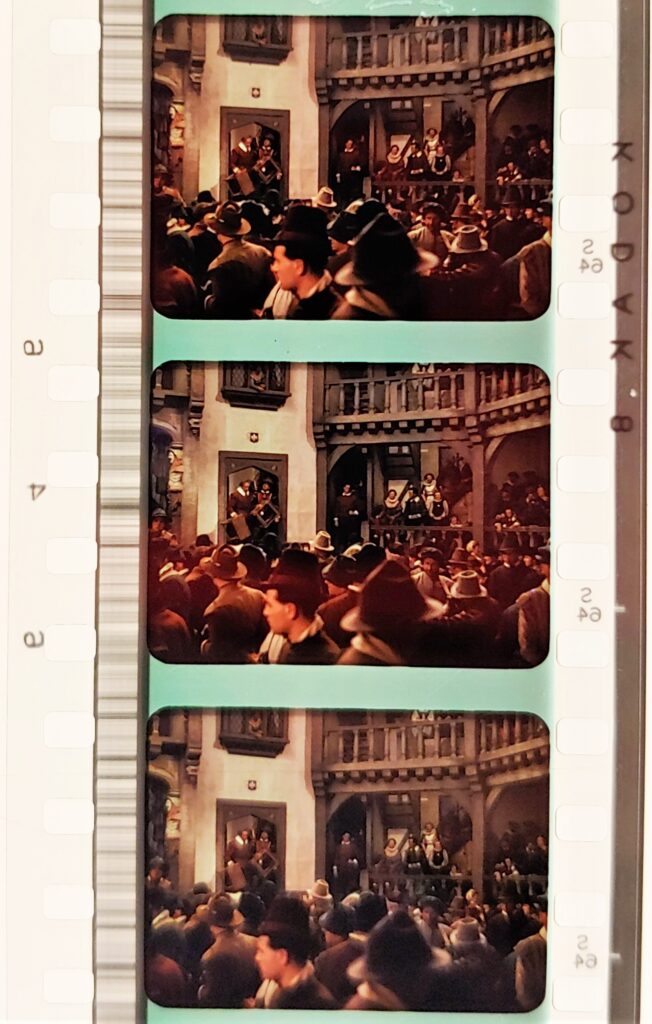

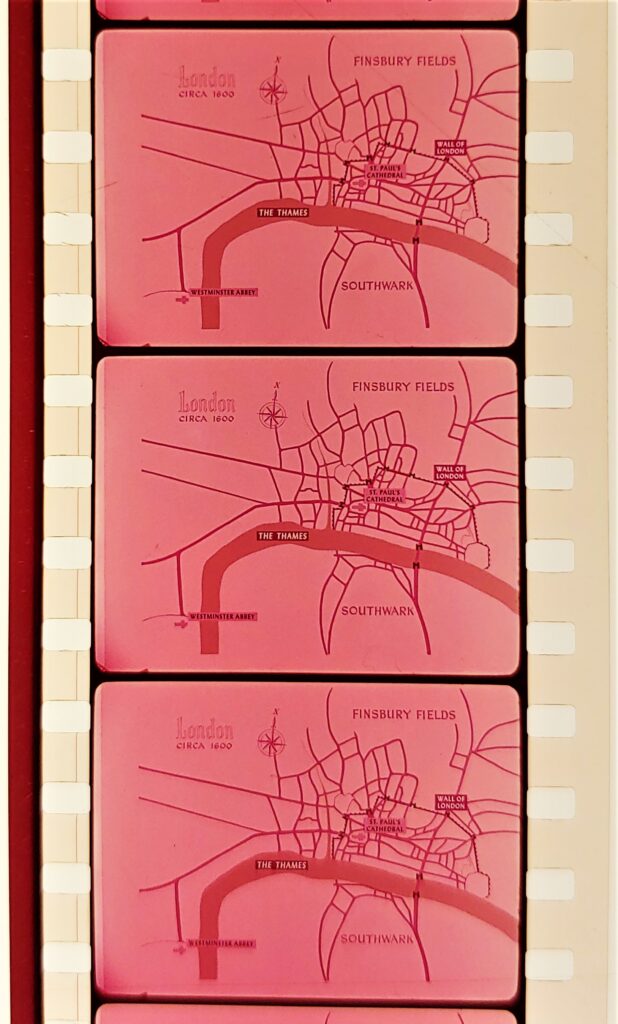
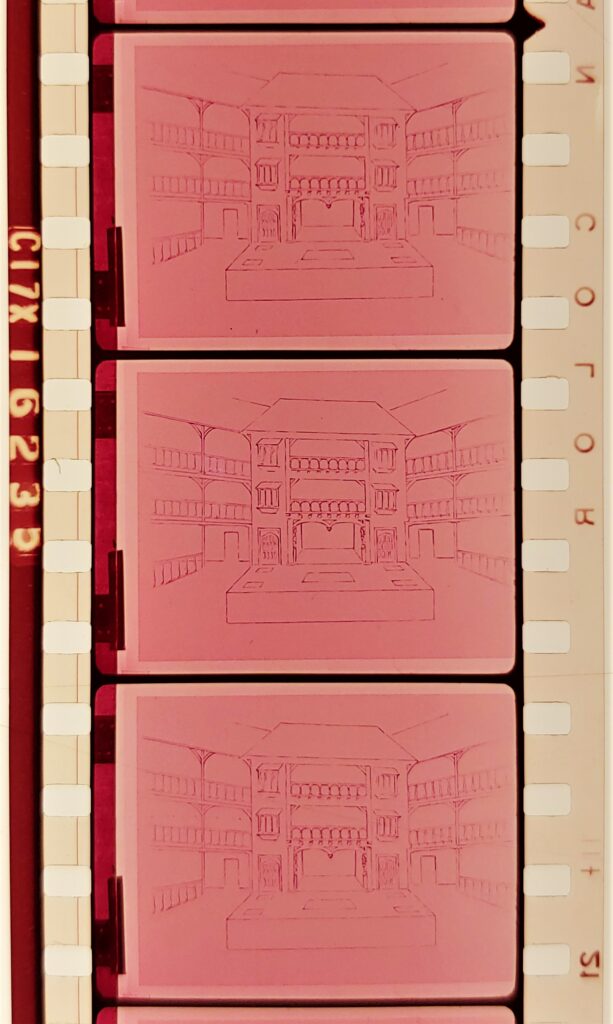
1 Comment
Excellent article Tim Wagner! We thoroughly enjoyed your enthusiasm for the subject and your job as we read through the blog post! Thank you for sharing this fascinating piece of history. We have traveled to Stratford-upon-Avon as well as The Globe Theatre in London – both are fabulous destinations!